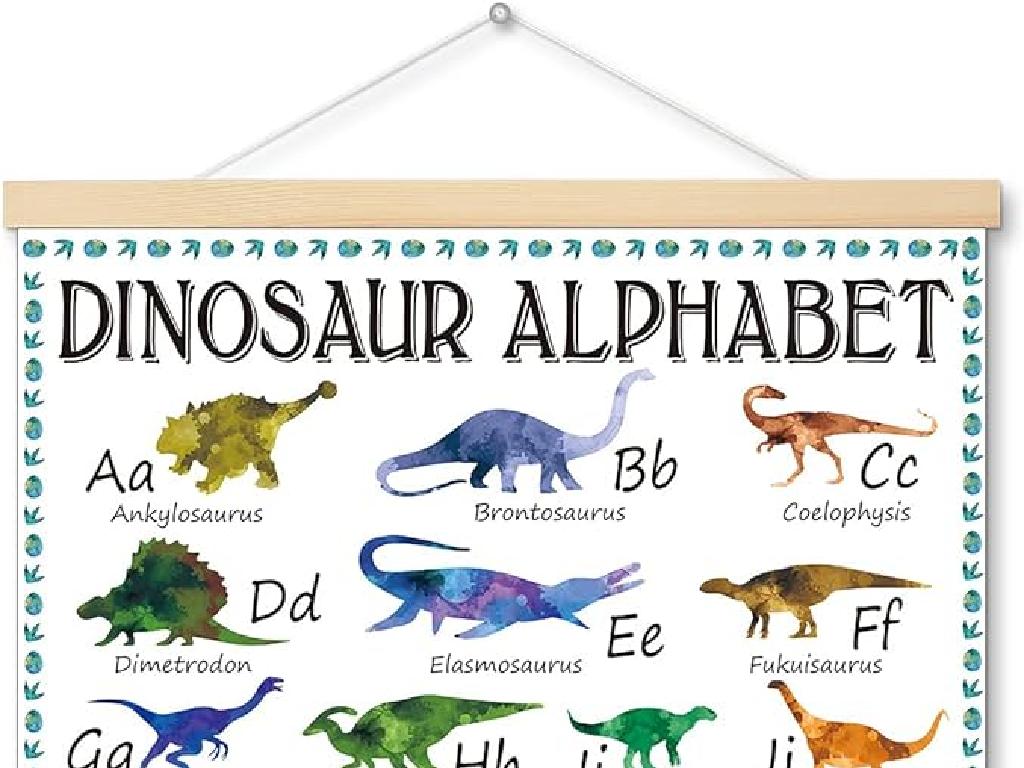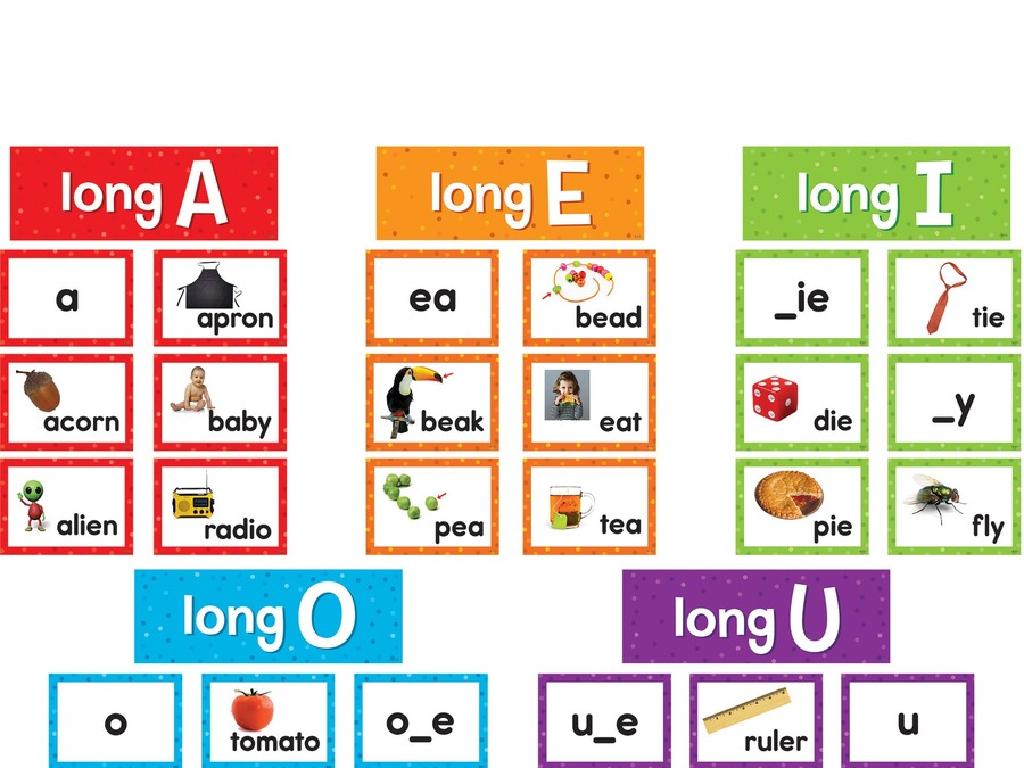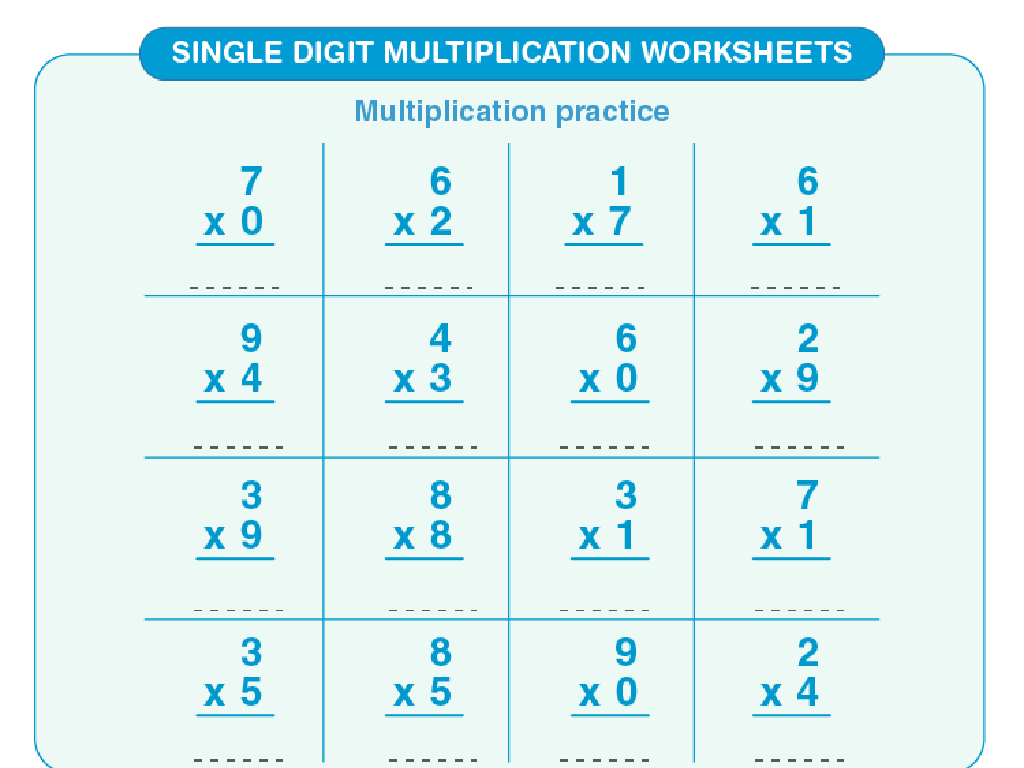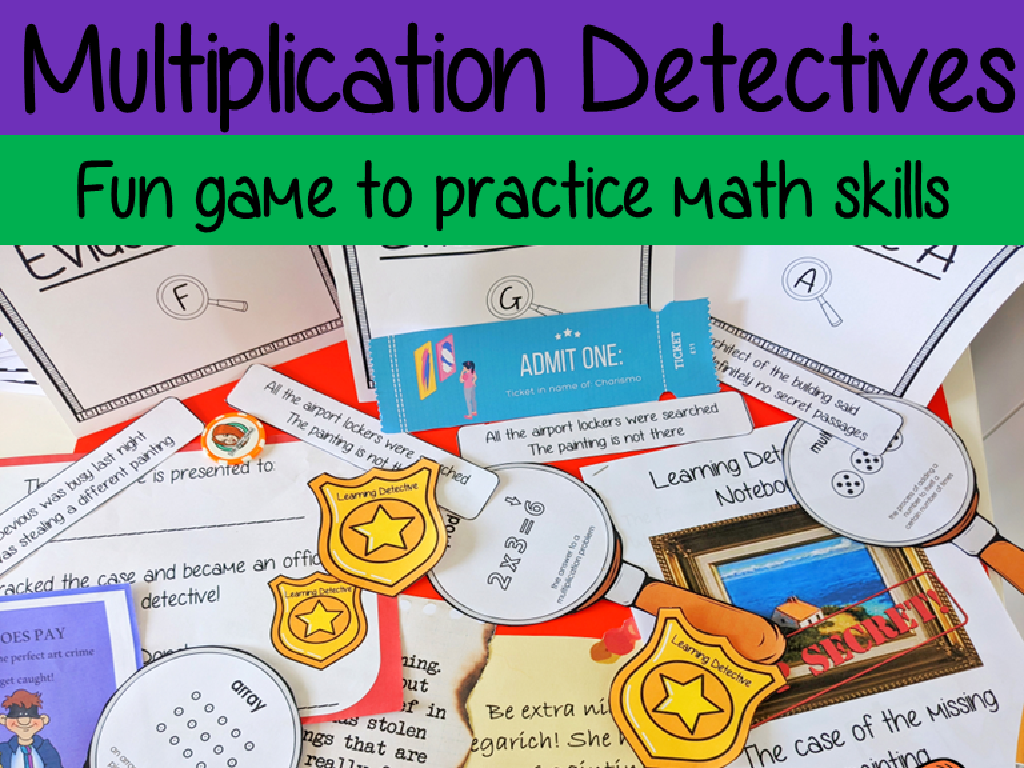Place Value Models For Decimal Numbers
Subject: Math
Grade: Fourth grade
Topic: Decimals
Please LOG IN to download the presentation. Access is available to registered users only.
View More Content
Understanding Decimals: Place Value Models
– Explore numbers beyond the decimal
– Numbers can have parts smaller than one, like 0.5 in half a dollar
– Decimals in everyday life
– Use decimals when dealing with money, measurements, and time
– Learn place value models
– Visual models show the value of each decimal place
– Preview of today’s activities
|
This slide introduces the concept of decimals to fourth-grade students, emphasizing their practical application in daily life. Begin by explaining that decimals allow us to represent fractions and parts of whole numbers, using the decimal point as a separator. Highlight how decimals are used in money transactions, measuring lengths, weights, and tracking time. Introduce place value models as a visual aid to help students understand the value of each digit in a decimal number. The lesson will involve hands-on activities where students create their own place value models and practice identifying the value of digits in various decimal numbers.
Understanding Decimals
– What is a decimal?
– A number with a point that separates the whole part from the fractional part.
– Decimals vs. whole numbers
– Whole numbers are complete, decimals represent parts.
– Decimals in money
– Example: $3.50 means 3 dollars and 50 cents.
– Decimals in measurements
– Example: 1.5 meters means 1 meter and 50 centimeters.
|
This slide introduces the concept of decimals to fourth-grade students. Begin with the definition of a decimal, emphasizing the decimal point’s role in separating the whole number part from the fractional part. Contrast decimals with whole numbers to highlight that decimals are used when whole numbers are not sufficient to describe a quantity. Use familiar examples such as money and measurements to illustrate how decimals are used in everyday life. For instance, explain that in money, decimals are used to represent cents, and in measurements, they can represent parts of a meter or liter. Encourage students to think of other examples where they have seen decimals used and to share their thoughts.
Understanding Decimal Place Values
– Explore tenths, hundredths, thousandths
– Tenths: 0.1, Hundredths: 0.01, Thousandths: 0.001
– Compare different place values
– Each step to the right decreases value by 10 times
– Place value chart for decimals
– Visual tool to pinpoint each decimal’s place
– Positional value in numbers
|
This slide introduces students to the concept of place values in decimals, which is fundamental in understanding how to read, write, and compare decimal numbers. Start by explaining the tenths, hundredths, and thousandths places, using examples like 0.1, 0.01, and 0.001. Emphasize how moving one place to the right in a decimal number decreases its value by ten times. Introduce a place value chart as a visual aid to help students see the position of each digit in a decimal number. Engage students with examples and ask them to place numbers on the chart themselves. Highlight the importance of each digit’s position in determining the overall value of the number.
Building Place Value Models for Decimals
– Base-Ten Blocks for Decimals
– Blocks represent ones, tenths, hundredths
– Grids Show Decimal Places
– Each square in a grid can represent a decimal place
– Activity: Make a Decimal Model
– Use blocks or draw grids to model decimals
|
This slide introduces students to visualizing decimal numbers using Base-Ten Blocks and grids, which are familiar tools from whole number place value lessons. Base-Ten Blocks help students understand that just as 10 units make a rod (representing ‘tens’), 10 ‘tenths’ make ‘one’. Similarly, grids can be used to represent decimal places by shading in the appropriate number of squares. For the activity, provide students with blocks and grid worksheets to create their own models of given decimal numbers. This hands-on experience reinforces their understanding of place value for decimals. Possible activities include modeling different decimal numbers, comparing decimal values using models, and converting between models and numerical form.
Reading and Writing Decimals
– How to read decimals aloud
– Say the whole number part, then ‘point’, and the digits after
– Writing decimals in words
– Write out the number as you say it, using words for the digits after the point
– Writing decimals in numbers
– Use numerals for the whole number and digits after the decimal point
– Practice converting decimals
– Convert decimals to words and vice versa with examples
|
This slide introduces students to the basics of reading and writing decimal numbers. Emphasize that when reading decimals aloud, they should read the whole number part first, followed by ‘point’, and then read each digit individually. For writing decimals in words, guide them to express the numbers as they speak them, using hyphens for numbers twenty-one through ninety-nine. When writing decimals in numbers, remind them to place the decimal point carefully. The practice activity should involve converting decimals between their word form and number form, reinforcing the lesson with real examples. Provide several examples for the students to work through and discuss as a class.
Comparing and Ordering Decimals
– Compare decimals using place value
– Look at the digits from left to right to decide which is larger or smaller.
– Order decimals from least to greatest
– Line up the numbers by decimal point and compare each place value.
– Class activity: arrange decimals
– Use the provided decimal cards to create a number line in class.
– Understanding decimal order
|
This slide introduces the concept of comparing and ordering decimal numbers by using place value. Students should understand that when comparing decimals, they must compare the highest place value first and move to the right. For ordering decimals, aligning the decimal points is crucial to accurately determine the sequence from least to greatest. The class activity involves students using decimal cards to physically arrange numbers on a number line, reinforcing their understanding of decimal order. Teachers should prepare decimal cards beforehand and ensure that each student or group has a set for the activity. Possible variations include using different sets of numbers for each group or timing the activity for a fun challenge.
Rounding Decimals
– Understanding the usefulness of rounding
– Rounding helps estimate and simplify numbers
– Rules for rounding to the nearest whole
– If the decimal is 0.5 or more, round up. If less, round down.
– Team activity: Practice rounding decimals
– Work together to round numbers like 4.76 or 3.49
|
Rounding decimals is a key skill in mathematics that simplifies numbers and makes them easier to work with, especially for estimation. Start by explaining why rounding is important and where it can be applied in real life, such as in money transactions or measurements. Then, teach the rules for rounding decimals to the nearest whole number, emphasizing the role of the digit after the decimal point. For the group activity, provide a list of decimal numbers and have students work in small teams to round them correctly. This will help reinforce their understanding through practice. Possible activity variations could include rounding to different places, such as the nearest tenth or hundredth, to challenge students at different levels.
Class Activity: Decimal Place Value Scavenger Hunt
– Find classroom objects with decimal values
– Use place value charts for guidance
– Charts help us see the value of each decimal place
– Identify the decimal places
– Share your findings with the class
– Discuss what you found and how you determined the decimals
|
This interactive activity is designed to help students apply their knowledge of decimal place values in a fun and engaging way. Students will search the classroom for items that can be quantified with decimal numbers, such as lengths of objects using a ruler that measures in tenths of an inch. They will use place value charts to assist in identifying the tenths, hundredths, and thousandths places. After the scavenger hunt, students will present their findings to the class, explaining the decimal values they found and how they used the place value chart. This will reinforce their understanding of decimals and place value. Possible variations of the activity could include finding prices of items in a classroom store setup, measuring liquids in graduated cylinders, or weighing objects using scales that measure in decimal increments.
Wrapping Up: Decimals and Place Value
– Recap place value for decimals
– Review tenths, hundredths, thousandths
– Why decimals matter
– Decimals are used in money, measurements
– Homework: Place Value Worksheet
– Practice with a fun worksheet at home
|
As we conclude today’s lesson on decimal place values, remind students of the importance of each place value position, from tenths to thousandths. Emphasize how decimals are everywhere in real life, such as in currency and measurements, making them crucial to understand. For homework, assign a worksheet that reinforces the day’s lesson, providing practice on identifying and writing decimal place values. This will help solidify their understanding and prepare them for more complex math concepts. Encourage students to try their best and remind them that practice is key to mastering decimals.






